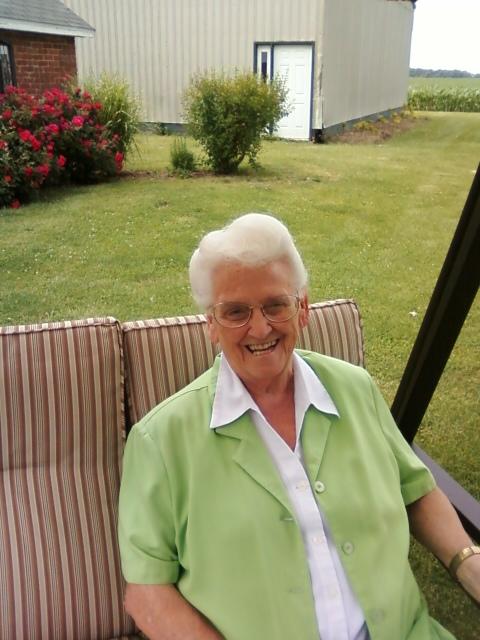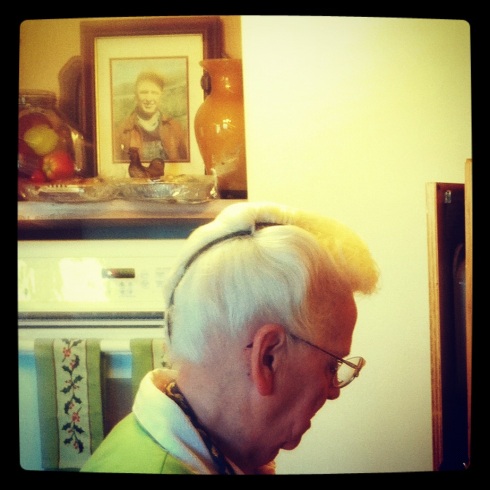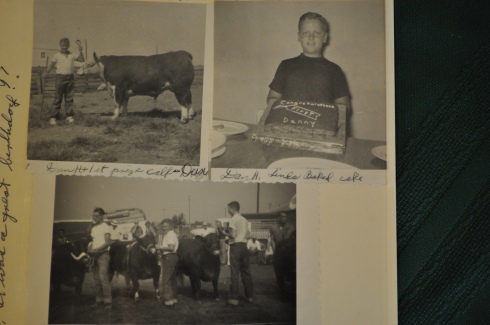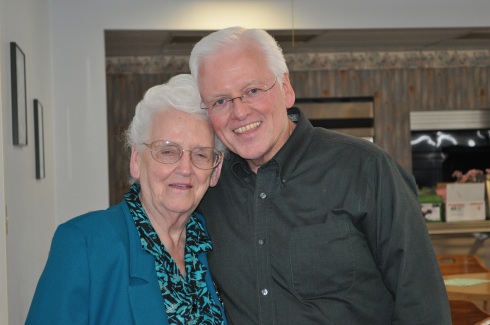
Mom continues to talk about her early days on the farm. “Then there was the time Paul brought in a box of newborn baby pigs. He wrapped them in a blanket and laid them on the open door of my new electric cook stove. It was zero weather outside. I had never smelled such an odor and besides that I didn’t want my stove contaminated with such.
He only did that a few times until he bought heat lamps for the hog house. We didn’t always have sheep, but when we did he would also bring baby lambs in the house to warm them up.
I cooked on the new electric stove and and heated wash water and bath water, ect. on the wood stove. I always kept a large tea kettle of water on the wood stove just for general purposes.
As spring advanced, I got out into the yard more and was delighted to discover the flowers coming up. The yard was fenced in and in the northeast corner were holly hocks and in front there was quite an array of pink roses. There were peonies, iris, sweet williams, lilies of the valley, jonquills, violets and spirea bushes. There was a storm cellar in the yard and the top came up to a rather tall mound. The little lambs would come into the yard, climb up on the cellar and butt each other off. Then they would run around to the other side and climb up and do it all over again. I loved watching them. I was terrified of storms and one day a really bad one came up and I went to the cellar. It was so dark in there that I was more terrified of the cellar than I was of the storm. When the farm work started, Paul’s dad and the hired man ate lunch with us. One day I baked a raspberry pie, and low and behold, I had forgotten to put the sugar in it. I was so embarrassed that I just wanted to crawl under the table and die, but Paul’s dad just lifted the top crust and sprinkeled sugar on it, ate it and told me it was delicious. As far as I know that was the only time he ever lied to me. I had never baked a pie before in my life. Well that’s it for now, we’ll have more pie talk later.” Hattie


